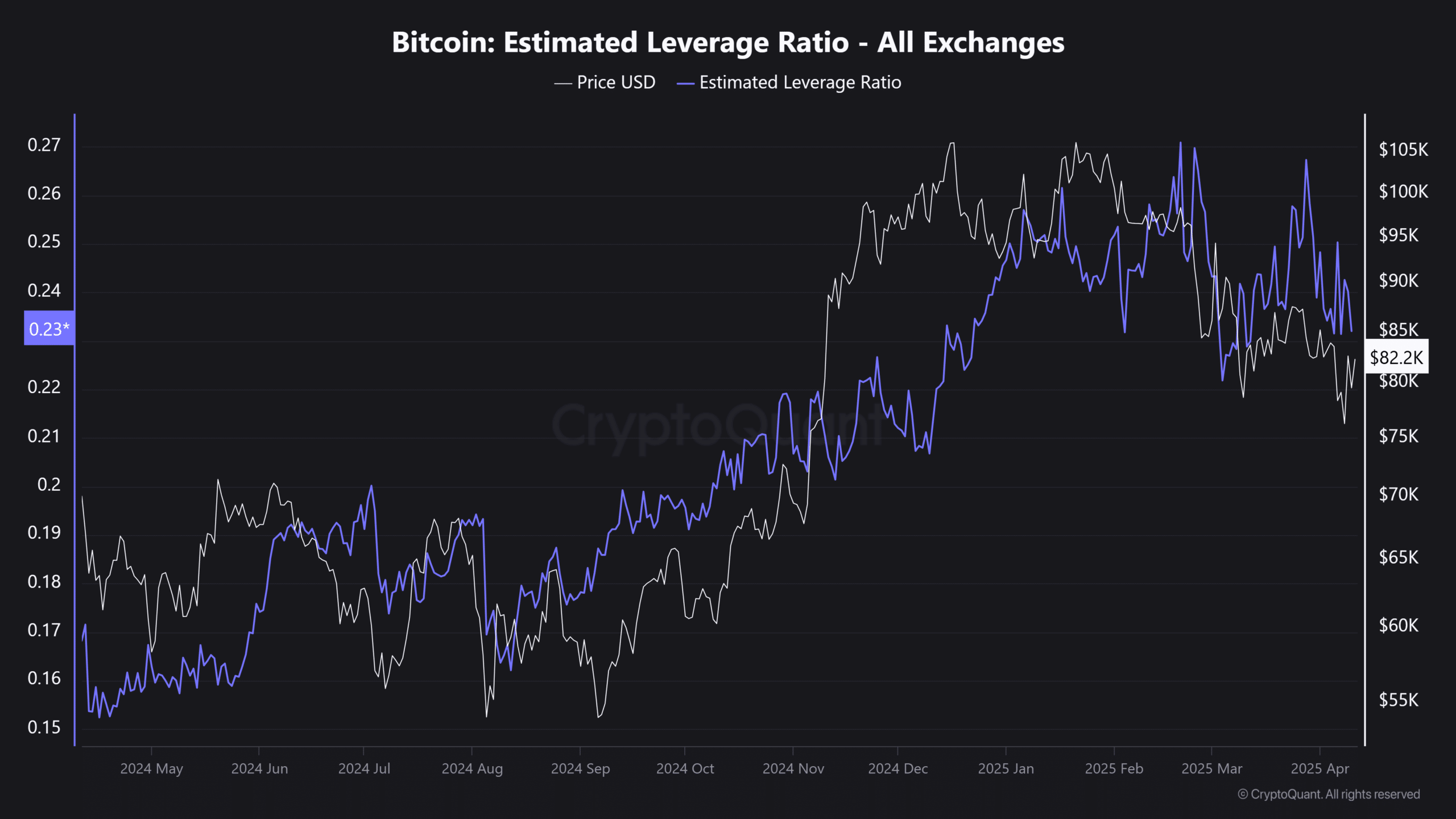- Bitcoin’s STH supply is facing increasing pressure as macro uncertainty fuels market volatility
- If BTC breaks below $72k, capitulation risks could escalate
On 09 April, U.S. President Donald Trump announced a 90-day pause on tariffs, triggering an 8.27% single-day surge in Bitcoin [BTC] – Its longest green candlestick in nearly a month. Then, on 10 April, U.S. core CPI inflation fell below 3.0% for the first time since March 2021. In response, Bitcoin surged by 3.36% to $82,532 at press time.
With these back-to-back macro boosts, the market seemed to be gaining momentum. However, a real test might lie ahead.
Short-Term Holders (STHs) have been feeling the pressure, as their realized price stood at $93k at press time – Far above BTC’s level.
So, if the Federal Reserve delays rate cuts, will STHs hold firm? Or will mounting resistance force them to capitulate?
Bitcoin’s STH supply signals capitulation risk
Bitcoin’s short-term holder (STH) supply is approaching a crucial inflection point.
On 10 February, STH-held BTC peaked at a four-year high of 400k. However, it has since declined to 360k, signaling net distribution.
This coincided with the world’s largest cryptocurrency breaching three key support levels – A sign of the sustained sell-side pressure from this cohort.

Source: Glassnode
On-chain data from Glassnode revealed that the bulk of these holdings were accumulated around $93k. With BTC trading below this realized price, approximately 360k BTC remains in an unrealized loss state, heightening the risk of capitulation.
More critically, the STH realized price sat at $131k and $72k, defining the critical liquidity zones.
If Bitcoin retraces to the lower band at $72k, profit margins for these holders would erode by 22%, placing additional stress on short-term conviction. Historically, a breach of the lower band has catalyzed forced liquidations.
Should Bitcoin sustain a move below $72k, cascading sell pressure could materialize, amplifying drawdowns.
Conversely, reclaiming $93k would flip STH’s positioning back into profit, potentially mitigating supply-side risk and reviving bullish momentum.
Macro volatility shaking short-term confidence
From a macro-structural standpoint, Bitcoin’s price action continues to consolidate below the pivotal $85k resistance level. Repeated rejections at this threshold indicate a liquidity zone that, if breached, could trigger a cascade of short liquidations.
Concurrently, Bitcoin’s Estimated Leverage Ratio (ELR) slipped below its early March baseline – Signaling a sustained deleveraging phase. Futures traders remain risk-averse, with a noticeable reduction in high-leverage positioning.


Source: CryptoQuant
Despite these challenges, however, Bitcoin has demonstrated some resilience.
Following the tariff-related market turbulence, BTC’s market cap saw only a $90 billion drawdown – A relatively modest flush-out compared to other risk assets.
However, with the Federal Reserve less likely to cut interest rates soon, macro uncertainty could push short-term holders to exit. Many of them bought around $93k. And, if the price doesn’t recover soon, they may sell to avoid deeper losses.
With fear still high, speculative demand low, and key resistance levels overhead, a dip to $72k remains a real possibility before Bitcoin can attempt a sustained breakout.

